Application Lifecycle Management
Conference Presentations
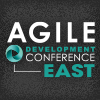 |
Disciplined Agile Delivery in IT: A Full Lifecycle Approach
Slideshow
The good news: Agile methods deliver superior results compared to traditional approaches. The bad news: For IT projects, mainstream agile methods-Scrum, Extreme Programming (XP), and Agile Modeling (AM)- provide only part of the overall solution. Agile IT projects require some time and effort for upfront planning at the start and activities for sophisticated deployment scenarios at the end. Additionally, most agile projects in large IT organizations cannot escape compliance with governance standards. Mark Lines describes and explores the realities of agile development in enterprise IT environments. Discover how IBM’s freely available Disciplined Agile Delivery (DAD) process framework combines common practices and strategies from mainstream agile methods to address the full delivery lifecycle-from project initiation to solution release into production. |
Mark Lines, UPMentors
|
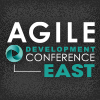 |
CMMI® to Agile: Options and Consequences
Slideshow
If you long for greater agility in your process-oriented or CMMI world, this session is for you. Paul McMahon shares how organizations can integrate agile approaches with CMMI and its key process area requirements. He discusses the advantages and disadvantages of different approaches taken by two organizations-one a CMMI Level 3 and the other a Level 5-to embrace agile principles and practices. To ensure your organization doesn't jeopardize its CMMI compliance with agile methods, Paul shares an approach that uses techniques such as asking key questions to focus objectives, pruning your processes, using the CMMI less formally, and keeping your "must dos" packaged separately from guidelines. He describes and discusses examples of each technique. Learn why the two organizations took different approaches, why one achieved its goals, and why the other fell short. |
Paul McMahon, PEM Systems
|
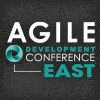 |
Better Software Conference East 2012: Lean Development Practices for Enterprise Agile
Slideshow
Enterprise agile initiatives require strategic, portfolio, product, and team perspectives at all levels. Alan Shalloway has found that lean software development principles help integrate all of these perspectives into a cohesive, actionable whole. With a combination of lean science, lean management, lean team, and lean learning methods, Alan shows how your organization can prepare for enterprise agility. Lean science focuses on the “laws” present in all software development projects. Lean management empowers executives to contribute to the context within which teams can flourish. Lean team methods are actualized in Kanban approaches. Lean learning empowers everyone in the organization to improve his skills and practices. |
Alan Shalloway, Net Objectives
|
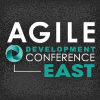 |
IT Governance and Compliance in an Agile World
Slideshow
Establishing IT governance and compliance practices is essential for organizations that have regulatory or audit requirements. The good news is that you can be agile and still comply with Sarbanes-Oxley, CFR 21, HIPAA, and other regulatory imperatives. Done well, IT controls actually help you improve both productivity and quality. Bob Aiello describes how to implement IT controls in frameworks such as ISACA Cobit and ITIL v3 that many regulatory frameworks require-while maintaining agile practices. Bob's guidance includes specific examples of establishing IT controls: separation of duties, work-item to change-set traceability, physical and functional configuration audits, and more. Bob explains how these practices help government, defense, and corporations scale agile practices where audit and regulatory compliance is a must. |
Bob Aiello, CM Best Practices Consulting
|
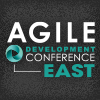 |
Ready and Fit: Adopting Agile in Highly Regulated Environments
Slideshow
If you live and work in a highly regulated environment (HRE)-medical devices, DoD and its contractors, nuclear energy, or other life-critical systems-this session is for you. For the past three years, the SEI has been researching agile and lean adoptions in the US Department of Defense. Suzanne Miller presents the organizational and cultural factors they identified as most important for development organizations to demonstrate when embarking on an agile adoption program. In the SEI's technology transition research, Suzanne and her team found that the more closely an organization meets the readiness and fit criteria, the more likely it is that the adoption will succeed. Suzanne discusses the risks and challenges that agile adoption presents to HREs, and presents ways to mitigate risks and overcome challenges. |
Suzanne Miller, Software Engineering Institute
|
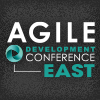 |
Lessons From The Trenches – The Do's And Don'ts of Agile Outsourcing
Slideshow
Due to its ongoing rise in popularity 'Agile' methods are now being used on a wide range of projects, varying in size and complexity. As a result it's not uncommon for key project areas, like development, testing, UX, etc to be outsourced to 'on' and 'off-shore' companies. And although the decision to outsource is sometimes the right one for a project, outsourcing also comes with its own inherent risks. Using real world examples based on personal experience, Ade Shokoya will be sharing the do's and don'ts of agile outsourcing. Attendees will leave this session knowing how to identify and avoid the common outsourcing problems that could quickly derail your agile projects - and potentially cost you your job. Armed with this knowledge you'll be better positioned to improve your personal power and influence at work, and achieve your career objectives. |
Ade Shokya
|
|
Leveraging Core Values for Healthier, More Productive Teams
Slideshow
Although all teams require a healthy level of interaction, high-performing teams' interactions are all based on trust, respect, and shared goals. Such teams find ways to overcome the fear of conflict, and quickly identify and resolve issues that are getting in the way. Scott Ross shares how, when the Omnyx software R&D department determined their culture was hindering performance, they crafted a core values statement that has served them well for the past three years. Scott describes the ways they proactively and intentionally use their value statement to drive the culture they seek and discusses the results they have achieved. Take back the list of resources that Scott uses daily to help himself and others see how their actions add to and take away from their core values. |
Scott Ross, Omnyx
|
|
|
Estimating in Software Development: No Silver Bullets Allowed
Slideshow
What do poker, Greek oracles, an Italian mathematician from the Middle Ages, and the path of hurricanes have in common? Given the title of this presentation, chances are it has something to do with estimation, and you'll have to attend this session to get the full connection. Kent McDonald explores the challenges and realities of trying to estimate software-related knowledge work-analysis, testing, development, and the entire project effort. A major challenge is that there are no guaranteed ways to arrive at perfectly accurate estimates, which not surprisingly is why they are called estimates. Kent introduces and gives you a chance to practice quick and practical estimating techniques that will work in different situations-guesstimating, break it down and add it up, and planning poker. |
Kent McDonald, Knowledge Bridge Partners
|
|
|
Better Test Designs to Drive Test Automation Excellence
Slideshow
Test execution automation is often seen as a technical challenge-a matter of applying the right technology, tools, and smart programming talent. However, such efforts and projects often fail to meet expectations with results that are difficult to manage and maintain-especially for large and complex systems. Hans Buwalda describes how the choices you make for designing tests can make-or break-a test automation project. Join Hans to discover why good automated tests are not the same as the automation of good manual tests and how to break down tests into modules-building blocks-in which each has a clear scope and purpose. See how to design test cases within each module to reflect that module's scope and nothing more. Hans explains how to tie modules together with a keyword-based test automation framework that separates the automation details from the test itself to enhance maintainability and improve ROI. |
Hans Buwalda, LogiGear Corporation
|
|
|
Beyond Processes and Tools: What about Ethics?
Slideshow
Too often we focus only on the latest headline-grabbing processes and products. While recognizing that we must respond to ever-changing business needs, deep down we know we must live by a few absolutes as we approach our daily work. At the core is a standard of ethical conduct that we always uphold. With an ethical underpinning, we will earn the trust and respect of our peers and those we serve. Jackie Pulley presents a framework for professional ethics within the IT development profession, including key practices from her experiences gained during more than twenty years in IT software development. Drawing on the PMI ethics standards, her personal lessons learned, and conversations with other leaders, Jackie offers a thought-provoking session for C-Level executives, freshly degreed software developers, and everyone in between. |
Jackie Pulley, Pulley Consulting Partners, LLC
|


